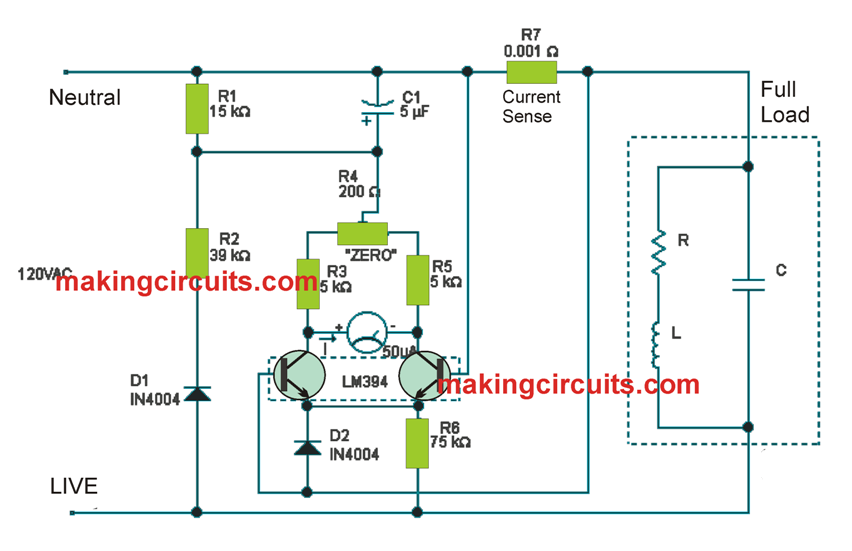The power consumption of the electrical gadgets and appliances is a immediate function of the energy consumed by all of them and of the interconnection time frame, the sophisticated loads (with RLC component) take in in addition to active or real power, reactive or apparent power; and each could be calculated.
With this particular experimental wattmeter you are able to determine the active power absorbed by basic or sophisticated AC loads of up to 1kW, and fed with 110VAC; Having said that, with a little difference in their resistance, loads of larger or lower voltages could be fed. The circuit doesn't demand external power and its consumption is no more than 500mW.
The load is given from the AC grid via the wattmeter and its current is assessed from the shunt resistance R7, that is designed with copper wire and whose resistance has to be equal to 0.001W. With this particular resistance value for R7, a voltage corresponding to 10mV is attained at its terminals for the highest load current (10A), which suggests a reduction in 0.01% in the charge voltage of the load, which can be regarded as acceptable and it would not impact the calculation.
The reading of the power is done through an analog microammeter calibrated in watts (W), having a highest scale of 50mA and nonlinear lower than 1%.
The relationship between the voltage and current of the load, which usually specifies the active power (P = VI), is formulated in an electronic form by using current (I) and will depend on the supply voltage and the value of the current sample charge available as voltage, with which the bases of the couple of identical transistors housed in the LM394 integrated circuit are polarized in differential mode.

Leave a Reply